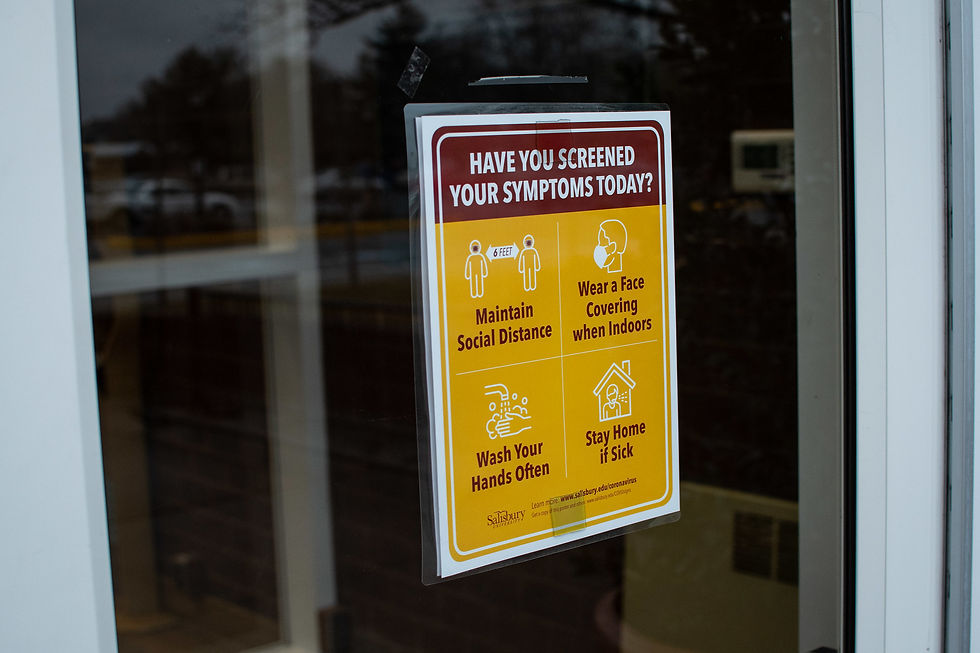Outside crowds on campus... a mistake?
- Jacob Beaver - Editorial Editor

- Feb 19, 2021
- 3 min read
Updated: Feb 19, 2021

While visiting the dining commons for dinner, I was recently greeted with a large crowd of school children visiting the facility. Before COVID-19, this would have been nothing more than a temporary annoyance.
However, the sight of crowded food lines and the absence of seating during the pandemic raised a daunting question. Why was a large group of visitors from outside Salisbury University allowed to visit such a communal area all at once?
According to Director Owen Rosten of Salisbury University Dining Services, large groups are subject to the same screening process as any other visitor.
What is the COVID-19 screening process for those outside the SU community?
Visitors are required to have their temperature taken and be asked a series of questions related to symptoms, tests and contact with infected individuals.
Anyone who answers “yes” to these questions will be denied access to SU. Those who pass the screening are given a visitor pass and granted access to the university’s facilities.
This is a thorough process, but is it sustainable for large groups visiting communal areas such as the commons?
The spread of COVID-19, even with current safeguards in place, is a real risk thanks to the introduction of mutated strains of the virus in MD.
According to the Centers for Disease Control and Prevention, the United Kingdom identified a COVID-19 variant called B.1.1.7 with heavy mutation in fall 2020. This strain is believed by health officials to be more contagious than other strains.
The Baltimore Sun reported that there were 22 cases of the UK COVID-19 variant within Maryland as of Feb. 13.
Salisbury University should continue to evolve its testing methods and other policies with the introduction of mutated strains. Screenings for visitors are vital in the fight to keep SU COVID-free during the pandemic.
However, my thoughts on a crowded dining hall during peak hours of student attendance remain the same.
While the screening may keep most of those with COVID-19 away from our community, it is not a guaranteed safeguard against the virus.
Screening questions mostly involve asking visitors about symptoms. According to Harvard Health Publishing, those who contract COVID-19 may not exhibit symptoms for up to 48 hours.
Visitors may not even know they have been in contact with someone with the virus, or that they have it themselves, when completing the screening.
There will always be risks taken during this pandemic, but there are ways to minimize those risks.
Exposure to students and staff should be controlled by dividing visiting groups larger than a specified size into two or more subgroups.
For example, rather than having fifty visitors attend the dining commons at once, five groups of ten visitors could attend at various times. Social distancing could still be enforced, and any exposure to COVID-19 for SU students would be minimized.
This would mimic the standards in place for Campus Tours and Information Sessions at SU, which currently enforce a guest limit of 10.
The virus’s impact on SU has remained minimal, with positivity rates from testing below 1% according to the latest virtual COVID-19 update from President Wight. Our university is safe and it should remain that way
Amid rising COVID-19 variants and in keeping with current policies, SU should reconsider how to handle large groups of those who visit our campus from outside the seagull community.
By JACOB BEAVER
Editorial editor
Staff photo by Brad Boardman





Comments